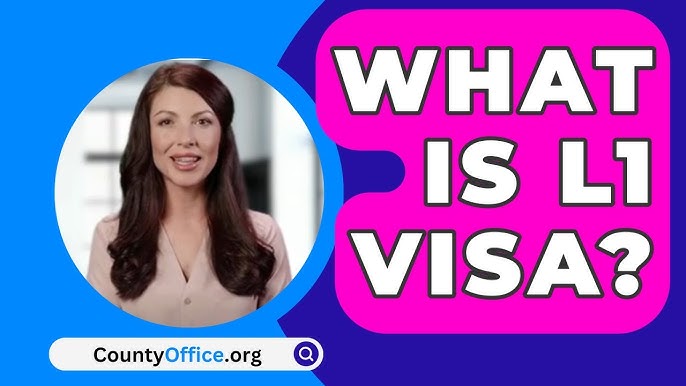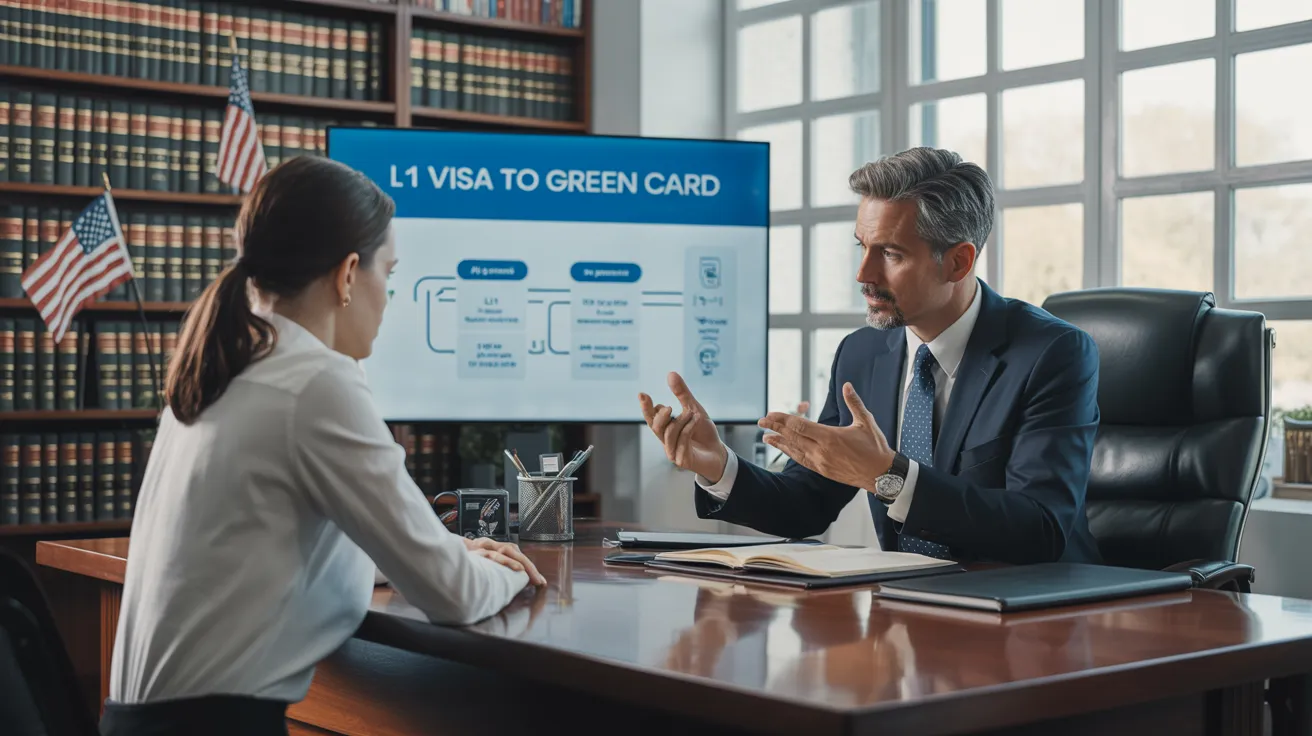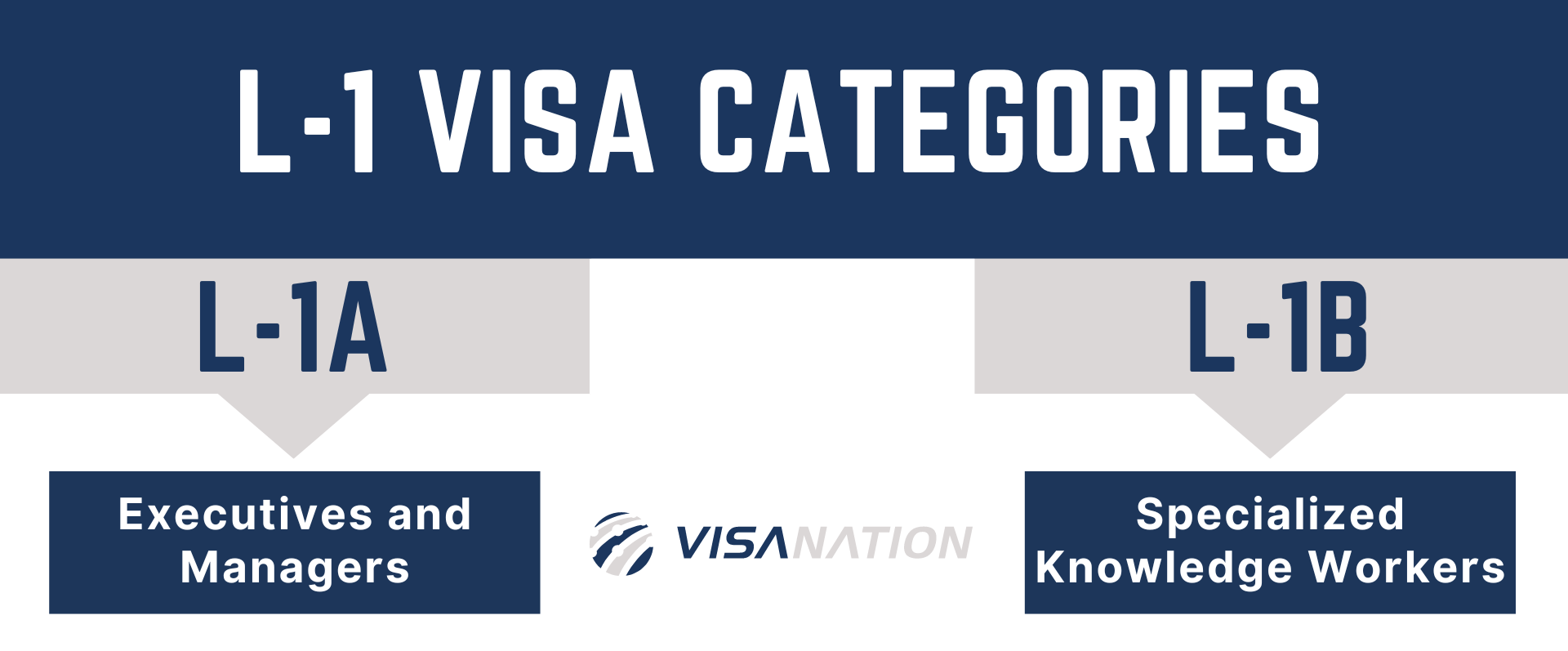Unlocking Opportunities: A Comprehensive Overview to the L1 Visa Process
The L1 visa process provides an essential pathway for multinational business looking for to move crucial staff members across boundaries. Comprehending the subtleties of qualification criteria, the differences between L-1A and L-1B visas, and the details of the application procedure can substantially impact a candidate's success. Nonetheless, maneuvering this complicated landscape is not without its difficulties, and careful attention to paperwork and employer sponsorship is important. As we explore the crucial components of this procedure, the approaches for getting rid of prospective challenges will end up being obvious, revealing exactly how notified preparation can open a globe of opportunities.
Comprehending the L1 Visa
Comprehending the L1 visa entails acknowledging its significance as an important device for international business looking for to transfer experienced employees in between worldwide workplaces. This non-immigrant visa classification promotes the movement of executives, managers, and specialized knowledge workers to the United States, thereby allowing organizations to keep operational connection and harness global talent efficiently. The L1 visa is split right into two main categories: L-1A for managers and execs, and L-1B for workers possessing specialized knowledge.The L1 visa offers an essential duty in boosting a company's one-upmanship in the worldwide market - L1 Visa Requirements. By enabling business to transfer their crucial workers, organizations can ensure that critical tasks are taken care of by certified individuals that are currently acquainted with the company's culture and operational procedures. This inner transfer device not just promotes knowledge sharing however also promotes technology and partnership across borders.Moreover, the L1 visa is usually preferred for its reasonably uncomplicated application process compared to other visa categories, as it enables twin intent, allowing holders to go after long-term residency while on a momentary job visa. This feature makes the L1 visa particularly appealing for both employers and staff members, as it streamlines the path for experienced professionals to develop long-lasting residency in the USA
Qualification Criteria
Eligibility for the L1 visa hinges on a number of vital criteria that ensure both the worker and the employer satisfy certain credentials. This non-immigrant visa is designed for multinational companies to transfer workers from consular services to united state counterparts.Firstly, the employer must be a certifying company, which consists of a moms and dad firm, branch, affiliate, or subsidiary of a united state business. The company should have been doing organization for at the very least one year both in the U.S. and abroad. This guarantees that the firm has enough operational security and a legit presence.Secondly, the employee needs to hold a supervisory, executive, or specialized knowledge setting. For L1A visas, the candidate should show supervisory or executive qualifications, while L1B visas focus on specialized knowledge associated to the company's products, solutions, or procedures. In addition, the staff member must have benefited the international entity for at the very least one constant year within the last three years before their application.Lastly, the worker's role in the U.S. should line up with their previous setting, guaranteeing that their skills and know-how are leveraged for the firm's benefit.
Kinds Of L1 Visas
The L1 visa classification consists of two key kinds made to help with the transfer of employees within multinational companies: the L1A visa for managers and executives, and the L1B visa for workers with specialized understanding. Each type serves distinct purposes and has specific eligibility criteria.The L1A visa is tailored for people that hold managerial or executive positions within a firm. This visa allows high-level staff members to transfer to a united state branch, subsidiary, or associate of the exact same company. Candidates for the L1A visa must show that they have been employed in a supervisory or executive capacity for at the very least one constant year within the past 3 years prior to their application. Furthermore, this visa provides a much longer period of remain, at first approved for 3 years, with the opportunity of expansions for up to seven years.In comparison, the L1B visa is planned for experts with specialized understanding pertaining to the firm's items, solutions, or procedures. To qualify, applicants should confirm that their know-how is important to the company and that they have actually benefited a minimum of one constant year within the last 3 years in a duty that required this specialized understanding. The L1B visa is initially approved for 3 years, with extensions available for approximately five years.Both visa types are important for firms seeking to improve their worldwide operations by leveraging knowledgeable employees, consequently advertising technology and performance within the united state market.
Application Process
Guiding via the L1 copyright procedure entails a number of vital steps that should be thoroughly followed to assure an effective end result. The process begins with the U.S. employer, that have to initially develop eligibility by demonstrating a qualifying connection with the foreign entity and validating that the staff member satisfies the specific requirements for the L1 visa group being sought.Once eligibility is validated, the employer launches the procedure by filing Form I-129, the Request for a Nonimmigrant Worker, with the U.S. Citizenship and Migration Provider (USCIS) This type must be accompanied by a detailed summary of the task tasks to be carried out, the business structure of both the U.S. and international entities, and the staff member's credentials. It's vital to validate that all info is exact and full, as noninclusions or errors can bring about hold-ups or denials.Upon approval of the I-129 request, the following action involves the worker using for the L1 visa at a united state consular office or consular office in their home nation. This phase requires the completion of Type DS-160, the Online Nonimmigrant copyright, and scheduling an interview. Throughout the meeting, the applicant has to offer proof sustaining their credentials and the company's petition.After the visa is granted, the employee can get in the USA to operate in the assigned duty. Generally, mindful preparation and adherence per step of the application process are necessary for an effective L1 visa outcome.
Called for Documents

Crucial Types Required
Steering the L1 Visa procedure needs careful focus to the vital kinds and documentation necessary for an effective application. The key kind required is the Kind I-129, Request for a Nonimmigrant Worker, which have to be completed and sent by the united state employer. This form outlines the details of the work deal and the qualifications of the worker looking for the L1 Visa.Alongside Form I-129, the applicant will certainly require to complete Form I-539 if coming with member of the family are additionally obtaining visas. Additionally, the employer must give proof of the certifying relationship between the U.S. entity and the international entity, frequently demanding the entry of company documents such as articles of unification or monetary statements.Moreover, it is important to include the L Classification Supplement to Kind I-129, which specifies the sort of L Visa being asked for-- either L-1A for supervisors and execs or L-1B for staff members with specialized understanding. Ultimately, applicants must assure that all kinds are authorized and dated properly, as insufficient entries can result in hold-ups or rejections. Effectively setting up these crucial types lays the structure for a smoother L1 copyright process.

Supporting Proof Demands
Supporting paperwork is necessary for an effective L1 copyright, as it validates the insurance claims made in the application. Applicants have to provide a series of papers to show qualification for the visa, which is classified right into two primary kinds: proof of the qualifying connection between the U.S. and foreign entities and proof of the applicant's qualifications.To establish the connection, applicants ought to submit documents such as company organizational charts, monetary declarations, and proof of ownership. These papers verify that the foreign firm has a certifying partnership with the united state employer, whether as a parent firm, subsidiary, branch, or affiliate.For the applicant's qualifications, necessary documents include a detailed work letter from the foreign company, describing the candidate's task title, duties, and period of employment. Furthermore, instructional credentials, such as levels and diplomas, ought to be offered to verify the candidate's expertise in the relevant field.
Company Sponsorship Files

Usual Difficulties
Steering the L1 visa procedure presents a number of usual challenges that candidates ought to recognize. Key issues usually include stringent paperwork demands, prospective hold-ups in handling times, and the requirement for rigorous legal conformity. Recognizing these barriers can aid candidates better prepare and reduce dangers throughout their copyright trip.
Documents Needs
The L1 copyright process often provides significant obstacles connected to paperwork requirements. Applicants have to offer considerable documents to establish eligibility, which can lead to confusion and possible delays. Key documents consist of proof of a certifying partnership in between the united state and foreign company, evidence of the candidate's employment background, and in-depth details concerning the job role in the U.S.One common difficulty is gathering enough evidence to demonstrate the nature of the qualifying connection. Companies commonly have a hard time to present clear business charts or monetary declarations that highlight the connection between the entities. Furthermore, making sure that letters of support from employers precisely show the candidate's job duties and qualifications is important, as obscure descriptions can lead to denials.Another problem emerges from the demand for comprehensive task summaries that straighten with the L1 visa groups. Candidates should articulate not only their present role yet additionally their managerial or specific understanding responsibilities plainly. This requires a detailed understanding of both the applicant's position and the regulatory language used in L1 applications.
Processing Dead Time
Experiencing hold-ups in handling times is a typical challenge dealt with by L1 visa applicants, typically resulting in disappointment and uncertainty. Numerous factors add to these hold-ups, including high application quantities, enhanced scrutiny of applications, and administrative stockpiles within the U.S. Citizenship and Immigration Solutions (USCIS) Applicants might discover that handling times can vary significantly relying on the solution center handling their application, as each center has its own workload and efficiency degrees. Additionally, the intricacy of the applicant's case, such as the requirement for extensive paperwork or explanation, can better expand wait times.In some circumstances, issues associated to the applicant's present migration standing or previous visa history might also cause added delays, as USCIS might require additional testimonial or info. It is important for candidates to remain aggressive throughout this duration, keeping open interaction with their employers and lawful agents to address any type of possible issues promptly.Understanding these handling time obstacles can aid L1 visa applicants get ready for feasible hold-ups and minimize the impact on their change and profession plans. Patience and diligence are necessary virtues in maneuvering this elaborate process.
Legal Compliance Issues
Many L1 visa candidates encounter legal conformity issues that can complicate their journey towards getting the visa. Comprehending and sticking to the particular laws established by the U.S. Citizenship and Immigration Services (USCIS) is important. Typical obstacles include demonstrating the qualifying partnership between the international and U.S. employers, as well as verifying that the candidate has the requisite specific understanding or supervisory capacity.Additionally, applicants need to supply complete documents detailing their task tasks, company framework, and economic feasibility of the united state entity. Insufficient or incorrect paperwork can cause hold-ups and even rejections. Companies have to also ensure that they abide by labor laws, consisting of wage and functioning condition criteria, which can affect visa eligibility.Another usual issue includes keeping conformity with the terms of the visa once granted. Modifications in employment standing, job duties, or business structure can necessitate modifications to the visa, which if not addressed promptly can bring about lawful problems. Because of this, staying notified about compliance requirements and looking for lawful guidance when necessary is important to browse the complexities of the L1 visa procedure efficiently.
Tips for Success
Success in the L1 copyright procedure often depends upon careful prep work and attention to information. To boost your possibilities of approval, start by completely understanding the qualification needs for both the L1A and L1B visa classifications. Examine whether your position at the company certifies as supervisory, exec, or specialized expertise, as this categorization notably impacts your application.Next, gather comprehensive paperwork that confirms your cases. This consists of organizational graphes, thorough job descriptions, and evidence of the company's operational framework. Clear and concise evidence of the certifying connection between the united state entity and the foreign entity is important. Validate that all records are organized logically and presented in a professional fashion, as this reflects your commitment and severity concerning the application.Engage the services of a seasoned migration lawyer that concentrates on L1 visas. Their experience can confirm invaluable, leading you via complex regulations and guaranteeing that all paperwork follows existing laws. In addition, prepare for the interview by practicing solution to typical inquiries and being prepared to discuss your function and payments to the business in depth.
Regularly Asked Concerns
Can Family Members Go Along With the L1 Visa Owner?
Yes, household members of L1 visa owners, consisting of partners and single youngsters under 21, can go along with the primary visa holder. They may also request L2 visas, which enable them to live in the United States.
Just How Lengthy Can I Remain On an L1 Visa?
The L1 visa permits initial remains of as much as three years, with the opportunity of expansion. L1A visa holders may stay for a maximum of seven years, while L1B visa owners can continue to be for 5 years.
Can L1 Visa Holders Get a Permit?
Yes, L1 visa owners can get an environment-friendly card. L1 Visa. They may seek irreversible residency with employment-based categories, generally calling for sponsorship from their employer, supplied they satisfy the necessary certifications and paperwork requirements
What Occurs if My L1 copyright Is Refuted?
If your L1 copyright is refuted, you may get a notification describing the reasons for denial. You can seek to appeal the choice, reapply, or discover alternate visa choices based on your scenarios.
Exist Any Kind Of Traveling Limitations With an L1 Visa?
An L1 visa generally enables worldwide travel; however, re-entry to the united state rests upon preserving legitimate condition. Travelers ought to guarantee conformity with visa problems to prevent difficulties upon return
Verdict
